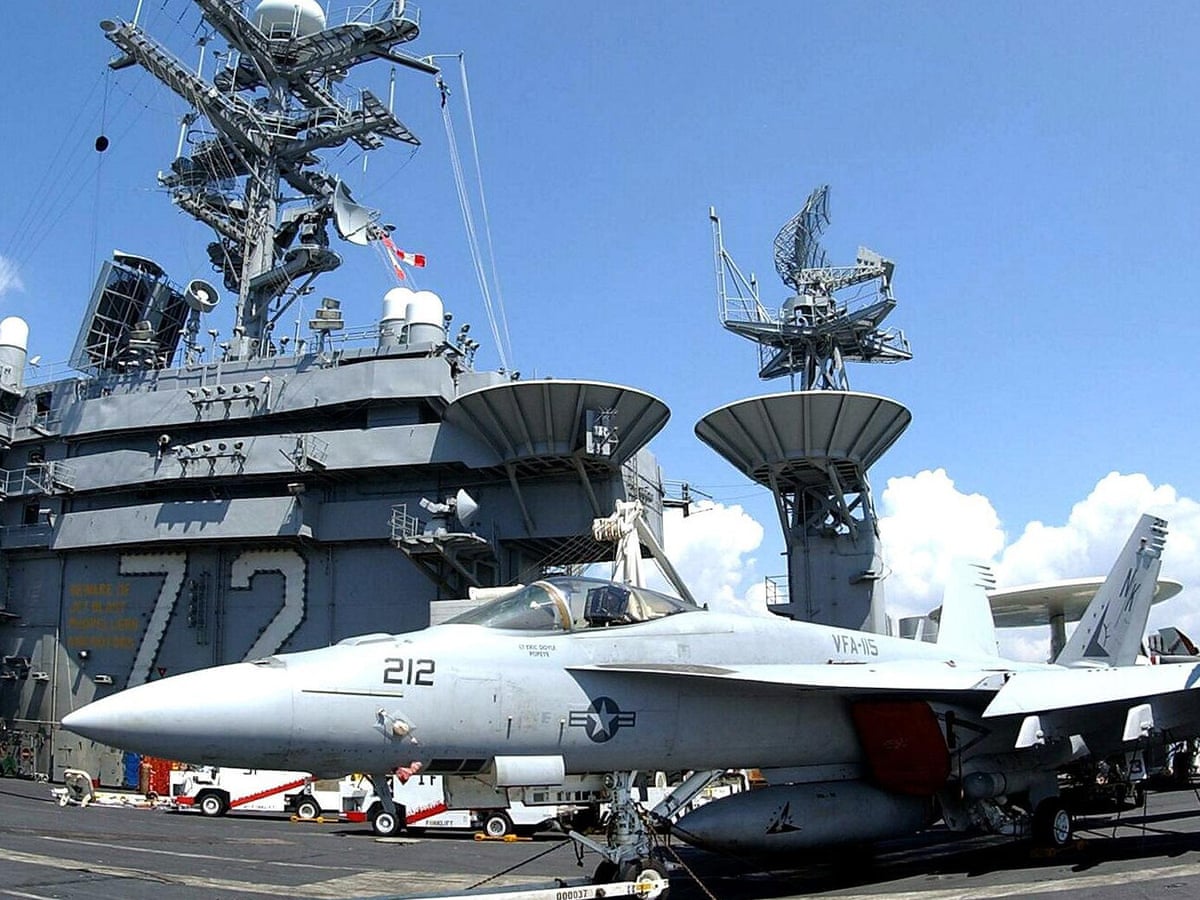Aircraft Carrier Letters - A second letter indicating the aircraft's airworthiness category followed the N and preceded the identification numbers. These airworthiness indicators were; "C" for standard, "R" for restricted, "X" for experimental, and later an "L" for limited, (for example, NC1234).
This was standard until December 31, 1948, when aircraft registered for the first time were required to display identification marks consisting of only the Roman capital letter "N" followed by the registration number. Existing aircraft operated solely within the United States could continue to display an airworthiness symbol until the first time such aircraft were recovered or refinished to an extent necessitating the reapplication of the identification marks.
Aircraft Carrier Letters
After December 31, 1950, all aircraft of United States registry operated outside of the United States were required to display identification marks consisting of the Roman capital letter "N" followed by the registration number. The earliest legal requirement for the N marking is found in the first general amendments to the Air Commerce Regulations on March 22, 1927.
Where Do N-Numbers Come From?
These amendments mandated that U.S. Aircraft engaged in foreign air commerce display the N at the beginning of its identification markings. Later, this requirement was extended to all U.S. aircraft, regardless of whether they operated beyond the Nation's borders.
This still leaves the question of why N was chosen over W for the U.S. aircraft identifier. The answer may lie in the fact that the government had reserved N for itself, while assigning combinations beginning with K and W to various radio stations along geographic lines.
N would therefore be less confusing as a single national marking for aircraft. No mention of N numbers appeared in the initial Air Commerce Regulations placed in effect by FAA's first predecessor agency in December 1926. The letter markings that this original set of rules specified were C (commercial), S (state), and P (private)
, which were to precede the numbers assigned to licensed aircraft. Unlicensed aircraft had numbers, but no letters, at this time. if(typeof ez_ad_units!='undefined'){ez_ad_units.push([[300,250],'crosswordeg_com-box-2','ezslot_2',106,'0','0'])};__ez_fad_position('div- gpt-ad-crosswordeg_com-box-2-0'); This crossword clue Aircraft carrier letters was discovered last seen in the April 6 2022 at the Eugene Sheffer Crossword.

The crossword clue possible answer is available in 3 letters. This answers first letter of which starts with U and can be found at the end of S. We think USS is the possible answer on this clue.if(typeof ez_ad_units!='undefined'){ez_ad_units.push([[580,400],
'crosswordeg_com-medrectangle-3','ezslot_4',132,'0','0'])};__ez_fad_position('div-gpt-ad-crosswordeg_com-medrectangle-3-0'); The U.S. received the "N" as its nationality designator under the International Air Navigation Convention, held in 1919. The Convention prescribed an aircraft-marking scheme of a single letter indicating nationality followed by a hyphen and four identity letters (for example, G-REMS)
. The five letters together were to be the aircraft's radio call sign. The choice was not universally popular. The Journal Aviation wanted the U.S. to adopt W in honor of the Wright brothers. Use of the letter N in the early days seems to have been restricted to aircraft that made international flights.

Compliance was voluntary at this time, since the U.S. did not ratify the 1919 Convention. The hull of the ship is made up of extremely strong steel plates, measuring several inches thick. This heavy body is highly effective protection against fire and battle damage.
The ship's structural support largely comes from three horizontal structures extending across the entire hull: the keel (the iron backbone on the bottom of the ship), the flight deck and the hangar deck. The hull portion below the water line is rounded and relatively narrow, while the section above water flares out to form the wide flight-deck space.
The lower section of the ship has a double bottom, which is pretty much what it sounds like -- there are two layers of steel plating: the bottom plating of the ship and another layer above it, separated by a gap.

The double bottom provides extra protection from torpedoes or accidents at sea. If the enemy hits the bottom of the ship, smashing a hole in the outer steel layer, the second layer will prevent a massive leak.
Secure .gov websites use HTTPS A lock (LockA locked padlock) or https:// means you've safely connected to the .gov website. Share sensitive information only on official, secure websites. Until December 31, 1960, the required location for display of nationality and identification marks for fixed-wing aircraft was the wing surfaces, and the vertical surface of either the tail or fuselage.
Effective January 1, 1960, all fixed-wing aircraft were required to display identification marks on the vertical surfaces or either the tail or fuselage. Wing surface markings were no longer required. (Another definition for uss that I've seen is "

United States Ship (abbr.)".) In the original 1919 allotment, most of the nations shared first letters. Only U.S. and four other nations were assigned a unique first letter to be followed by any combination of four letters.
In each case, that first letter was the same as a radio call letter that had been previously assigned to that nation by an evolving series of international agreements. As of April 1913, for example, Great Britain had complete rights to the radio letters B, G, and M, while sharing certain other letters.
Not surprisingly, Great Britain received G as its aircraft nationality identifier under the 1919 agreement. During this era, the U.S. had complete rights to the radio letters N and W, and to combinations of K from KDA to KZZ.
Why these particular letters? The assignments of W and K appear to have been arbitrary, according to articles on early radio call signs by Thomas H. White. In the case of N, White notes that the U.S.
Navy had used this radio letter since November 1909.
aircraft carrier model, aircraft carrier ww1, aircraft carriers by country, current us aircraft carriers, list of us aircraft carriers, us aircraft carriers wwii, number of us aircraft carriers, list of aircraft carriers wikipedia

